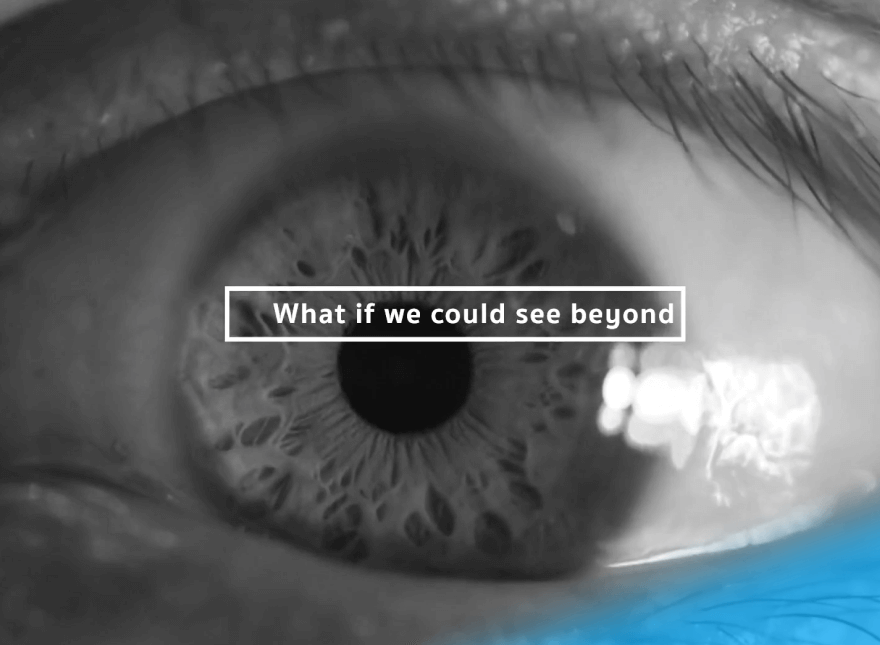25 Lessons Learned from Softeq CEO Chris Howard
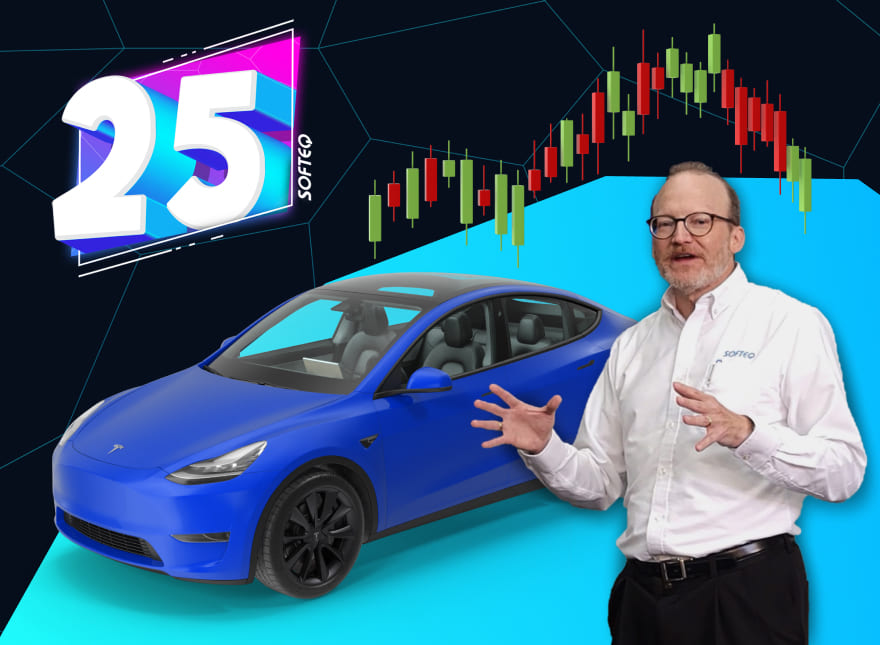
Twenty-five years ago, there lived a young entrepreneur called Chris Howard. He knew nothing of what his future would hold, but all the steps he would take in life would create a future of innovative startups, global corporations, the support of amazing people, and a company of his own with hundreds of employees.
Chris hit a few bumps in the road before reaching his goal. He has posted his experience as lessons on his Twitter account to inspire entrepreneurs and investors and encourage them to keep their businesses on track. We have gathered 25 of those lessons in this article so that you can access them easily.
So, let’s walk this path together with Chris and see how to
- Avoid expensive investment mistakes
- Attract long-term customers who return again and again
- De-escalate a conflict with an angry customer
- Run a successful startup
Table of Contents
- Lesson 1: Buy the Stock Instead of the Product
- Lesson 2: Quality over Quantity when it Comes to Investing
- Lesson 3: Don’t Assume You’ve Missed an Opportunity
- Lesson 4: “No” Can Be the Best Answer
- Lesson 5: When One Door Closes, Another Door Opens
- Lesson 6: Take Back Control of Your Day
- Lesson 7: Step Into the Twilight Zone
- Lesson 8: See Failure as an Opportunity to Learn
- Lesson 9: Find Time for Learning
- Lesson 10: Embrace Failure
- Lesson 11: Have Grit
- Lesson 12: Don’t Take Your Team for Granted
- Lesson 13: Increase Your Return with Due Diligence
- Lesson 14: Review Lots of Deals to Start Seeing Patterns of Success
- Lesson 15: Don’t Build Version 3.0 Before Shipping
- Lesson 16: Focus on Making Your First Customers Really Happy
- Lesson 17: Listen to Early Feedback
- Lesson 18: Acknowledge Your Customer’s Distress
- Lesson 19: Admit to Your Mistakes
- Lesson 20: Tell Customers You’re Sorry
- Lesson 21: Do What You Promised to Do
- Lesson 22: Deliver When You Say You Will
- Lesson 23: Never Surprise Your Client with a Big Bill
- Lesson 24: Rely on Experienced Technology Partners to Mitigate Risks
- Lesson 25: Outsource Early-Stage Development
Lesson 1: Buy the Stock Instead of the Product
Chris was an early Amazon fan. Even though he has spent a lot of money on Amazon products over the years, he didn’t buy the stock for a long time. It was the same with Tesla. As an early Tesla auto fan, he bought one of the company’s first 1,000 cars—but, again, he didn’t purchase the stock.
If you love the product, it might be a perfect candidate for your stock portfolio.
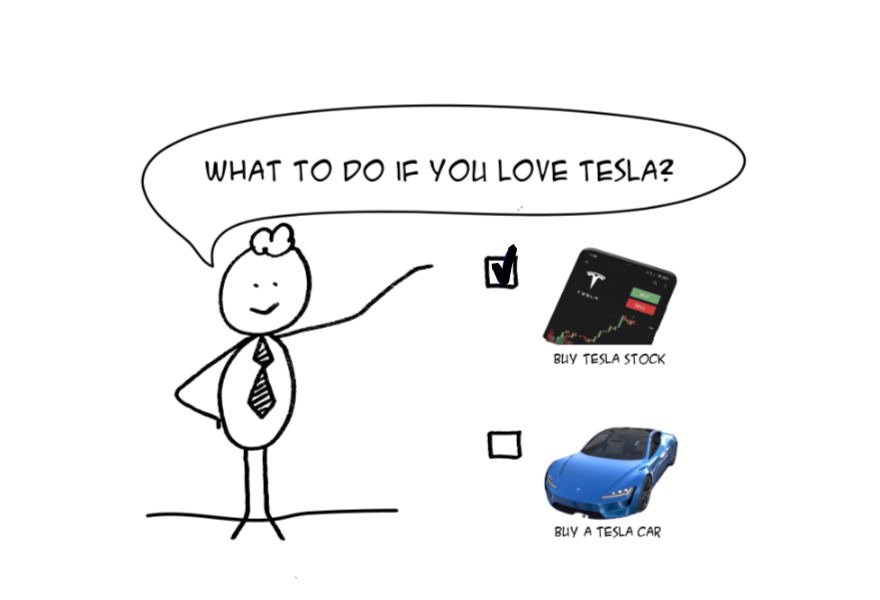
Lesson 2: Quality over Quantity when it Comes to Investing
Chris was convinced that Google was the next Microsoft. But, when Google stock debuted at $54, he thought it was too expensive and passed on the opportunity.
Remember, it’s not the share price that matters. If Chris had spent $1,000, it would be worth XXX today.
If you have a good feeling about stock but only have a limited amount to spend, remember that it could be worth a lot more in a few years.
Lesson 3: Don’t Assume You’ve Missed an Opportunity
When Chris finally decided to buy Amazon and Tesla stock, he did so at a crazy price—Amazon at $750 and Tesla at $180. Some years later, Amazon stock increased to $3,200 and Tesla’s to $900.
Does it seem like your portfolio candidate is surging? Don’t assume that its incredible run is over.
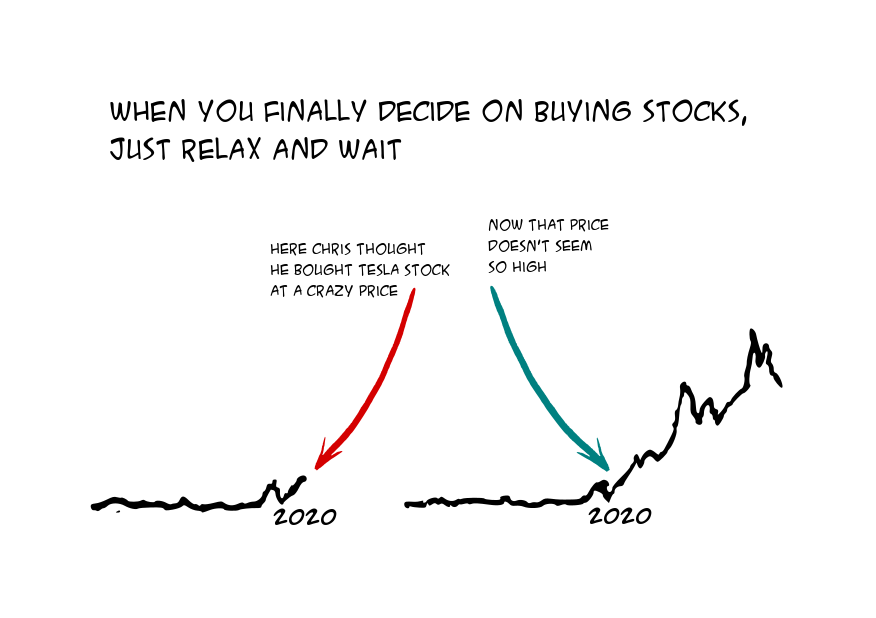
Lesson 4: “No” Can Be the Best Answer
In the 1970s, Steve Wozniak designed his own personal computer as a hobby. He was working at HP at the time and tried to get the company interested in it. His managers turned him down, thinking nobody would ever use computers at home. So what did Wozniak do? Together with his friend Steve Jobs, he went into his garage and built the first personal computer. Apple is now worth over $2T.
Sometimes, getting a “no” can be the greatest thing to ever happen to you. The person saying “no” may be doing you a huge favor.
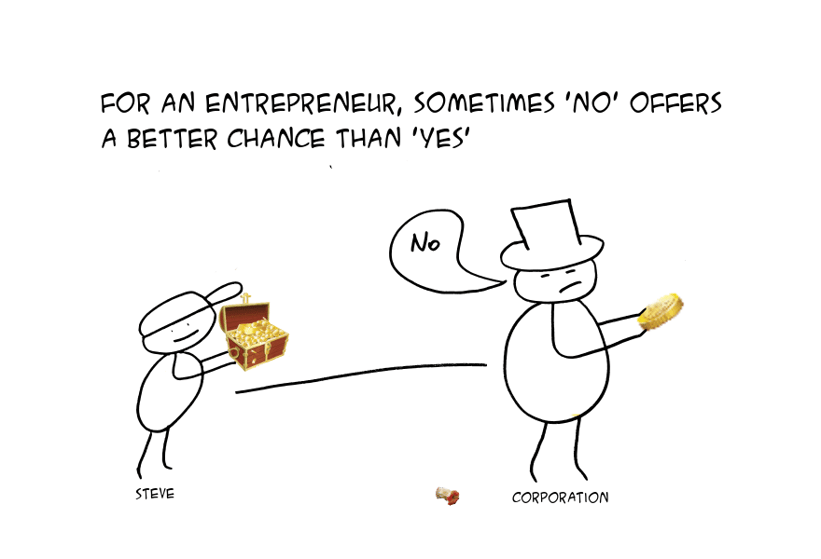
Lesson 5: When One Door Closes, Another Door Opens
A few years back, Chris’s biggest client, representing over 80% of his business, terminated their contract. But this didn’t turn out to be such a bad thing: Softeq had an opportunity to offer another customer a large team that was immediately available. Not all our competitors could offer that.
Ultimately, three companies were competing for that workforce, and Softeq was hiring as quickly as it could. A few years later, one of those clients acquired the team that was working on its project, allowing Chris to hire more people and push his company to the next level.
When a door closes, look away from it and start searching for the door that has just opened.
Lesson 6: Take Back Control of Your Day
Chris celebrated his 12th birthday with his family a week before his actual birthday. When his real birthday arrived, he wanted to see if anyone would realize—but nobody did. Chris became more and more depressed as the day wore on, but he was determined not to tell anyone. Instead of actually enjoying his birthday, he ended up having a miserable day.
It could have been much different if he had said that morning, “Yay! It’s my birthday!” and let everyone congratulate him.
We can either wallow in our own self-pity or bring positivity to ourselves and to others.
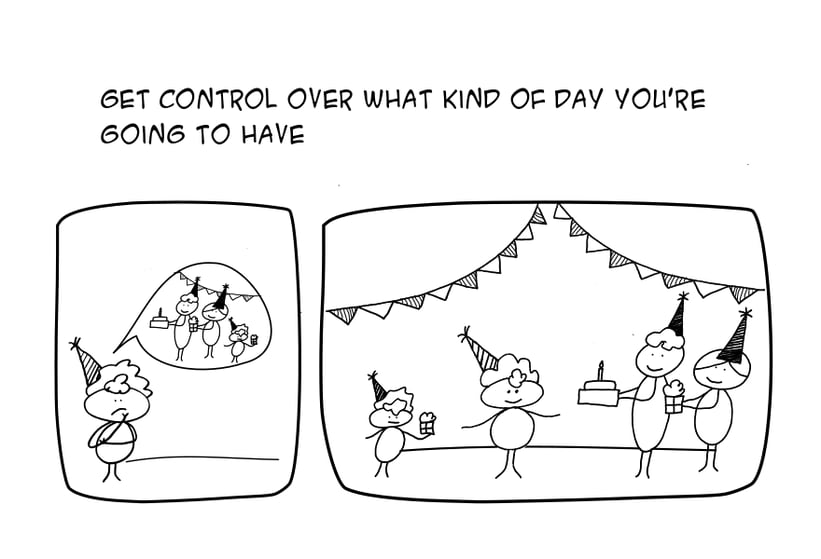
Lesson 7: Step Into the Twilight Zone
Every time Chris started something new, it felt like entering a madhouse. It was all so unfamiliar, whether he was starting a family, learning programming, becoming an entrepreneur, learning a foreign language, launching a business in a foreign country, or getting a pilot’s license.
Learning and growth come from stepping out of your comfort zone—or stepping into the twilight zone, as Chris says. You don’t know what you’re going to find there, but it’s exciting.
Inside your comfort zone, you won’t learn anything.
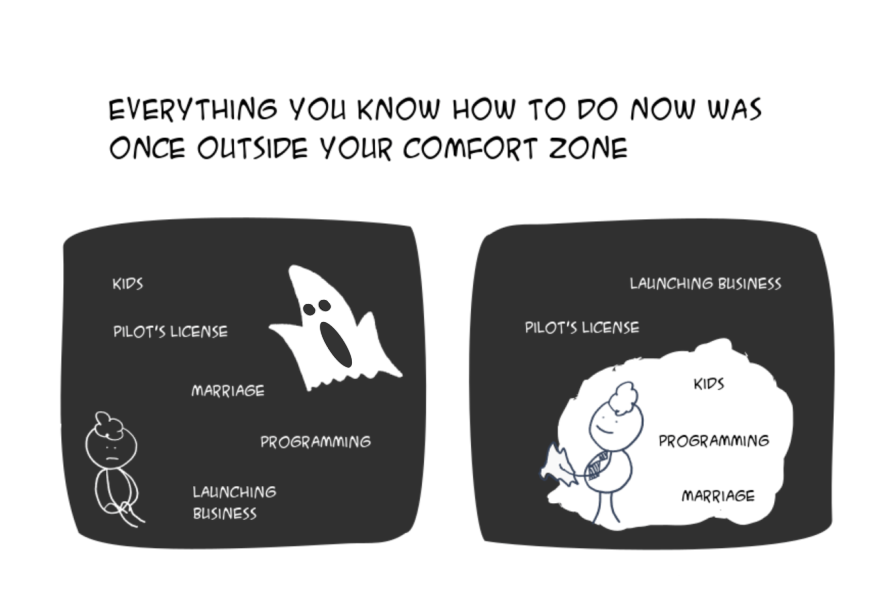
Lesson 8: See Failure as an Opportunity to Learn
Chris built his first electrical device when he was 10 years old. He took some wire, a lamp plug, and a small lightbulb and wired them together. Once he was at home alone, he had the chance to test his creation. He plugged it in, and the bulb lit up for a millisecond before the house breaker blew. When his mom came back, she found him in a dark house, and he had to explain what he’d done.
Chris’ father periodically showed the “device” his son had made to his friends, and they would laugh. He might have done so out of pride about Chris’ initiative to experiment, but Chris was a little embarrassed by his failure.
Over the years, Chris has made many different devices, including a dual-rocket launch controller box and a Morse code system that he wired between bedrooms. Now, he’s the founder and CEO of a company that designs and builds gadgets for businesses along with the firmware and software that makes them work.
You can either be stopped by failure or see that it’s just a learning tool on your journey.
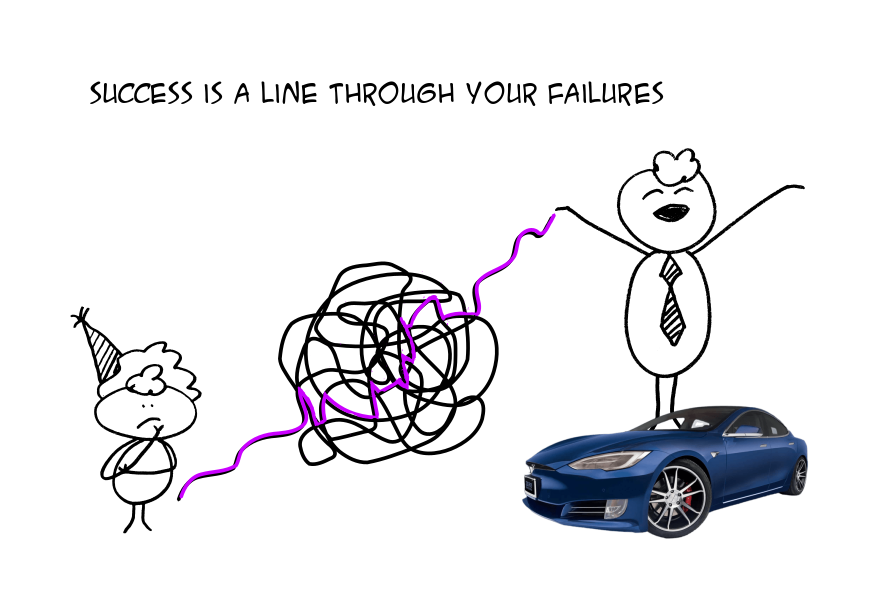
Lesson 9: Find Time for Learning
If you go to a doctor who graduated over 45 years ago, half of their original knowledge is already outdated. In the IT industry, this happens even faster. A Harvard Business Review concluded that the skills students acquire at college only stay relevant for five years. To stay ahead, you need to invest extra time in learning.
To find that spare time, Chris uses a hack called “double time.” The idea is that you can listen to podcasts or take classes all while standing in line, driving, eating, preparing dinner, or exercising. Knowledge is free and at your fingertips all day.
Combine your everyday activities with learning, and you’ll carve out time to stay relevant.
Lesson 10: Embrace Failure
At the age of 27, Sam Walton bought a variety store in Newport, Arkansas. He wanted to make the store the most profitable in the region within five years. And he did it. Then, in the blink of an eye, he lost everything due to a bad lease. So, he picked himself up and opened a store called Walmart. Second time’s a charm.
Fire destroyed Kirk Christiansen’s business several times. The first time was his woodworking company; the second time was his wooden toy factory, and the third time was the company’s entire wooden toy inventory. After that, Kirk Christiansen decided to stop with wooden toys and move ahead with plastic. This is how the modern LEGO toy was born. Three busts and a boon brought LEGO into this world.
Be brave enough to start from scratch. It may be your ticket to the next level.
Lesson 11: Have Grit
All sorts of things can happen to those who become entrepreneurs. They can lose their largest customers. Their factories can burn to the ground. They can run out of cash. Entrepreneurship involves failures, risk-taking, and commitment to years of work before success arrives.
At Softeq, when Chris lost a customer that was 80% of his business, one option was to shut up shop. Instead, he prevailed, and Softeq has since made the Inc. 5000 list of fastest-growing companies for three consecutive years.
Grit makes you determined to bounce back from failures and setbacks.
Lesson 12: Don’t Take Your Team for Granted
You’ve got a great team that loves working with you—but because of that, they may be hesitant to ask you for a raise. If you don’t pay enough attention to your employees or review their salaries, they may slip away from your company and take their expertise elsewhere.
Review your team’s salaries regularly and make them feel appreciated.
Lesson 13: Increase Your Return with Due Diligence
Angels who spend less than 20 hours on due diligence have an average return of 1.1X capital. Angels who spend 20+ hours average 5.9X. Angels who spend 40+ hours have an average return of 7.1X.
The amount of due diligence an investor carries out correlates with their returns.
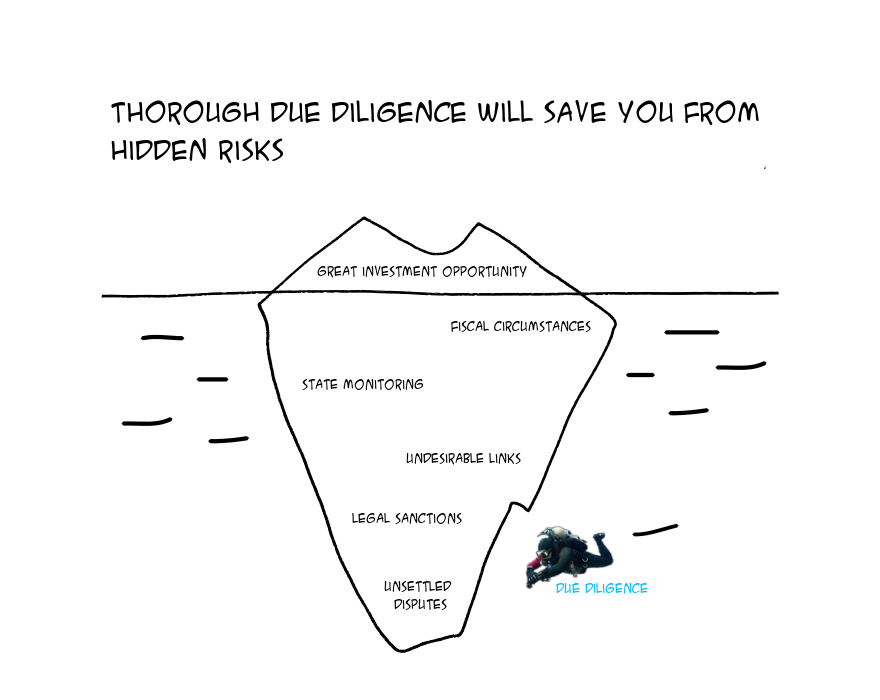
Lesson 14: Review Lots of Deals to Start Seeing Patterns of Success
Chris was speaking to a very successful seed stage VC about his new $50M fund. He shared that he reviews 1,400 deals a year and invests in only seven. Over three years, that’s just 21 deals out of 4,200. Why? Because every shot needs to be on goal. Six or seven deals will provide over 80% of the returns in your portfolio.
By seeing tons of deals, you’ll develop pattern recognition for what truly exceptional looks like.
Lesson 15: Don’t Build Version 3.0 Before Shipping
Avoid bloating your product with features before you ship version 1.0, as doing so may increase cost and time-to-market. Also, you can only guess what customers want instead of getting early feedback and knowing for sure.
Select the core features for version 1.0 to get real feedback from customers as quickly as possible.
Lesson 16: Focus on Making Your First Customers Really Happy
Once you have defined core features for your version 1.0, focus on making them really great to make your very first customers happy. After you have found the product–market fit with your first happy customers, pump it up. Remember, when Facebook launched, it was available to just one university for years—and look where it is now!
Don’t go worldwide right out of the gate.
Lesson 17: Listen to Early Feedback
When Airbnb launched, they were based in California while most of their users were in New York City. Their advisor asked them why they weren’t out in NYC speaking to their customers. The founders took the hint and traveled to meet with their users. Not only were they able to listen to their customers and understand their perspectives, but they could also help them improve their listings. This ultimately ended up giving their business the boost it needed.
Early feedback will help you understand what’s important and what’s not.
Lesson 18: Acknowledge Your Customer’s Distress
Dealing with an unhappy customer can be challenging, but doing so effectively can make a huge difference to your business’s success.
All hell breaks loose when emotions kick in. Because of this, try to cool emotions from the start. The quickest way to do this is to agree with the client. Agreeing with your customer can be as simple as saying, “If this happened to me, I’d be angry, too.” After that, you can ask, “How can we get things back on track for you?”
It’s hard to argue with “Yes, you’re right.”
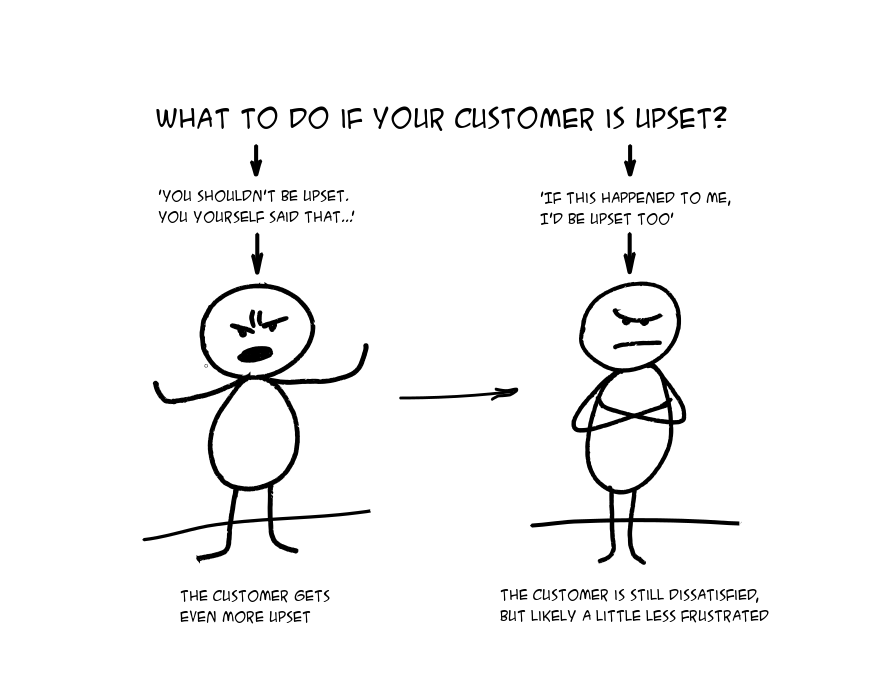
Lesson 19: Admit to Your Mistakes
When your customer is angry, acknowledge your (or your company’s) part in the situation. Don’t try to brush it off, explain what went wrong, or blame someone else. Saying, “We messed up here,” or “We could have done that better,” helps the customer feel heard. But remember, you actually need to hear them.
By being responsible for your actions and admitting your faults, you can prove your honesty to your customer.
Lesson 20: Tell Customers You’re Sorry
Saying, “I’m sorry that happened to you,” shows you are not taking a defensive approach. This may seem like an obvious reaction, but apparently, it’s difficult for many of us to do. It may bruise your ego, especially if you’re in a situation where you don’t believe you’re at fault. However, when someone has a bad experience with your product or service, you or your company have done something wrong in some capacity.
An honest apology tells the client you understand their feelings about the problem they’re facing.
Lesson 21: Do What You Promised to Do
Keep your word and do what you originally said you would do. This approach makes it more likely that the client will rely on you next time. This is key to establishing long-term client relationships.
It’s important to listen carefully to your customer and properly document their requirements. If you do something wrong, be willing to invest in the outcome.
Don’t sell time; sell delivery.
Lesson 22: Deliver When You Say You Will
This is another lesson that will help you gain long-term customers. In addition to breaking trust, missed deadlines can have a domino effect and disrupt your customer’s other plans. This is unprofessional and lowers your chances of winning your next project.
These experience-tested recommendations may come in handy:
- Make sure your delivery milestones are both documented and realistic.
- Ensure your client knows what they’re going to receive and when your team will deliver it.
- Keep an eye on feature creep and ensure your client understands how adding or changing features will affect the delivery schedule.
- Remember that missing a milestone is not an option.
Do your best to keep to deadlines. Deliver what you promised when you said you would.
Lesson 23: Never Surprise Your Client with a Big Bill
Both features and schedules will work against you during a project. Therefore, it’s important to monitor changes in scope and communicate the impact of this to the customer.
Don’t try to maximize your profits on the first project. It’s better to invest in short-term success to win long-term business. This approach hasn’t failed Softeq yet: we have customers on their 38th statement of work (SOW).
Surprising the client with a big bill won’t help you win the next project. Deliver what you said you would for the fee you set out at the start.
Lesson 24: Rely on Experienced Technology Partners to Mitigate Risks
Many advisors encourage tech startups to hire an internal development team, and some won’t invest if you don’t have one. However, this isn’t always an advantage for development.
Since the team has never shipped a product together before, it can be expensive and risky. For a proof of concept (PoC) and a minimal viable product (MVP), you need a team that has been proven to deliver.
A less risky option would be to hire a technical partner who has delivered a similar product before. This is what companies like Intel, Verizon, and Epson have done. They have the capital to hire anyone they want. But when it comes to innovative products, they rely on technology partners to get products built.
Working with a tech partner won’t just ensure delivery—you also access technical resources without paying for permanent employees.
Lesson 25: Outsource Early-Stage Development
When building a PoC or an MVP, there’s no reason to hire an iOS, Android, or backend developer, a business analyst, or a solution architect and pay them all high local salaries. Instead of wasting your precious initial capital on hiring an in-house team, leverage the resources of the world. And once you’ve found your product–market fit, you can raise that Series A and build your internal team.
Don’t waste your initial capital on hiring when building a PoC or MVP.


